Hollywood Heat Wave
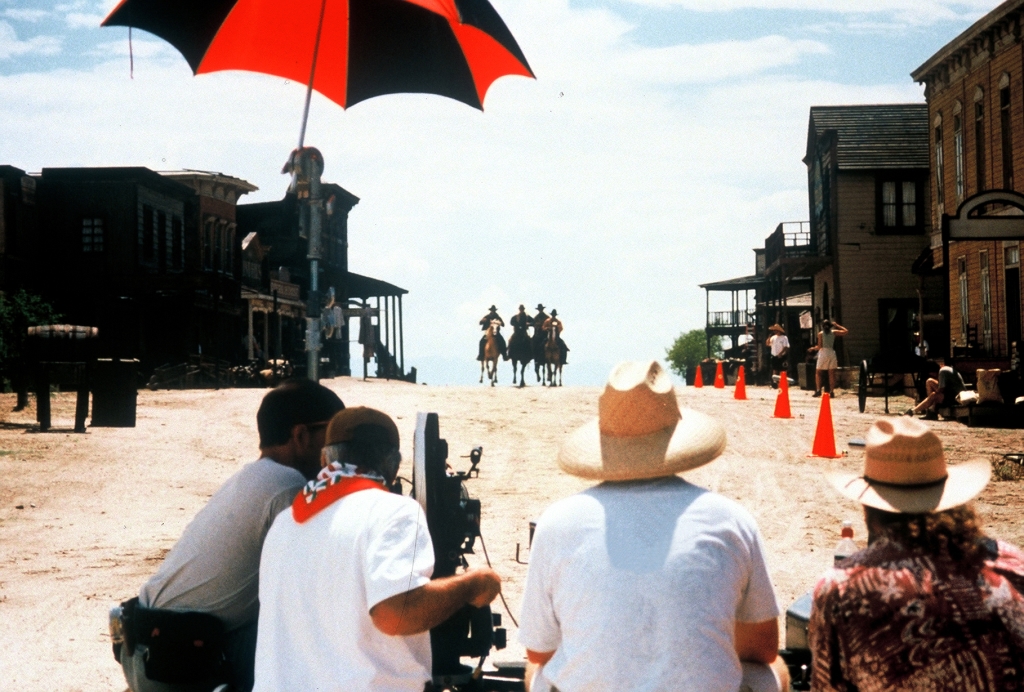
Writer Rebecca L. Rhoades
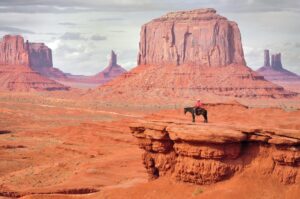


In 1939, John Ford became the first director to shoot in Monument Valley. His film, the classic “Stagecoach” starring John Wayne, put the Navajo Nation on the movie map and made the iconic landmark a familiar backdrop of the American Western genre.
Ford went on to film a number of additional movies amid the towering sandstone buttes and instantly recognizable Mittens formations, including some of the greatest Westerns of all time: “The Searchers,” “She Wore a Yellow Ribbon” and “Cheyenne Autumn.” Today, one of the most popular stops in the park is John Ford Point, a rocky promontory used in “The Searchers.” Visitors can recreate, for a fee, the dramatic shot of the Navajo scout on horseback with the Three Sisters, Spearhead Mesa and North Window in the background.
But Ford wasn’t the only Hollywood insider enamored by Arizona’s rugged northern terrain. Since those early Westerns, Monument Valley has played a role in many cinematic productions, from “2001: A Space Odyssey” and “Easy Rider” in the late 1960s to the more recent “Thelma & Louise,” “Forrest Gump,” Johnny Depp’s “The Lone Ranger” and “Transformers: Age of Extinction.”
Of course, the tribal park is just a small region of the state. From its desolate desert along its southern border to its bustling urban areas to its man-made lakes in the north, Arizona’s scenery has served as the backdrop for everything from cowboy adventures to cult favorites to sci-fi classics.
According to the Arizona Commerce Authority, more than 5,000 movies have been filmed in the Grand Canyon State since 1913, starting with a silent Western of the same name, “Arizona.”
So what makes Arizona so popular with TV and film production crews? Phil Bradstock, film commissioner for the Phoenix Film Office, notes, “It’s our geography and the fact that we can basically replicate all 50 states. If you’re looking for pine-topped mountains and snow, obviously we have that in the Flagstaff area and ski resorts. If you’re looking for sand dunes, those are over in Yuma. If you’re looking for the dense urban environment, we have that in Phoenix.”
Arizona’s — and Phoenix’s — ability to mimic other parts of the country or to simply present a generic all-American look also makes the state a popular location for commercials.
“Our main industry is actually commercials,” Bradstock says. “The makers of commercials don’t want the setting to look like a specific region; they want it to be anywhere USA. So places like Arcadia get filmed heavily because it has green grass year-round.”
Phoenix’s film office began in October 1974, and Bradstock has been at the helm since 2006.
“Pretty much anything that’s on city property, or that affects city property, has to go through the Phoenix Film Office,” he says. “So that’s going to be if you’re filming in a park, on the street or the sidewalk, at one of our three airports that we oversee, in any government building — anything like that, and we have to issue permits.”
Movie buffs are sure to recognize some familiar, real-life scenery. Who can forget the climactic scene in Clint Eastwood’s 1977 action flick “The Gauntlet,” when Eastwood’s and Sondra Locke’s characters drive a bus to Phoenix police headquarters? They travel along Monroe Street and end up on the steps near Phoenix Symphony Hall on Second and Adams streets.
Eagle-eyed East Valley residents will clearly identify the Red Mountain Freeway (Loop 202) interchange in the 2006 indie hit “Little Miss Sunshine.” And strange things definitely were “afoot at the Circle K” in “Bill & Ted’s Excellent Adventure.” The 1989 comedy was shot at locales around the Valley, including a Circle K in Tempe, Coronado High School in Scottsdale, Metrocenter Mall in northwest Phoenix and Golfland Sunsplash water park in Mesa.
“A lot of people, when they think of films from Arizona, immediately think of John Wayne,” Bradstock says. “But we have a history of all kinds of movies here. For example, the opening scene of ‘Psycho’ was shot in downtown Phoenix. The camera was placed on top of the Orpheum Lofts.”
The 1960 Alfred Hitchcock classic, starring Anthony Perkins and Janet Leigh, pans over the San Carlos Hotel, Hotel Adams and Jefferson Hotel.
“Another one I can think of is ‘Raising Arizona,’” Bradstock says. “The house from which Nicolas Cage steals the baby is the Jokake Inn at the entrance of the Phoenician Resort. Another fun one is when John Goodman’s and William Forsythe’s characters break out of jail. They come through a sewer pipe, but that’s actually the water treatment plant off 24th Street and Lincoln Drive. It kind of has a jail look to it because it’s a secure location.”
Additional locations for the Coen brothers’ film included the Salt River Pima-Maricopa Indian Community in north Scottsdale and Lost Dutchman State Park.
Sadly, many of the state’s celluloid attractions are no longer around.
“Phoenix is constantly reinventing itself, so a lot of these locations don’t exist anymore,” Bradstock says.
Bill and Ted’s Circle K and Metrocenter were torn down in the past few years. The legendary Cudia City, an Old West sound stage where episodes of popular TV shows such as “Gunsmoke” and “The Rifleman” were filmed, was razed for redevelopment in the 1960s. Today, the location at the northeast corner of Camelback Road and 40th Street is home to the retro Capri on Camelback apartments.
Of course, there are still plenty of places that fans can visit. Some, such as the Arizona Biltmore and Lon’s at the Hermosa, which both featured prominently in “Waiting to Exhale”; Desert Botanical Garden, as seen in “Noelle”; and Aunt Chilada’s in north Phoenix, where Will Ferrell dined in “Everything Must Go,” are easy everyday stops for visitors and locals alike. Others require some travel and perhaps some imagination to recall their Hollywood identities.
This month, Images Arizona takes its readers on a tour of some of the most iconic Arizona film locations. From the legendary Old West setting of Old Tucson to the otherworldly desert landscapes of Page and Lake Powell, these cinematic destinations offer a glimpse into the state’s rich history as a backdrop for Hollywood magic. Join us as we explore the places that have brought countless classic movies and TV shows to life, and discover the enduring allure of Arizona’s diverse and stunning scenery on the big screen.
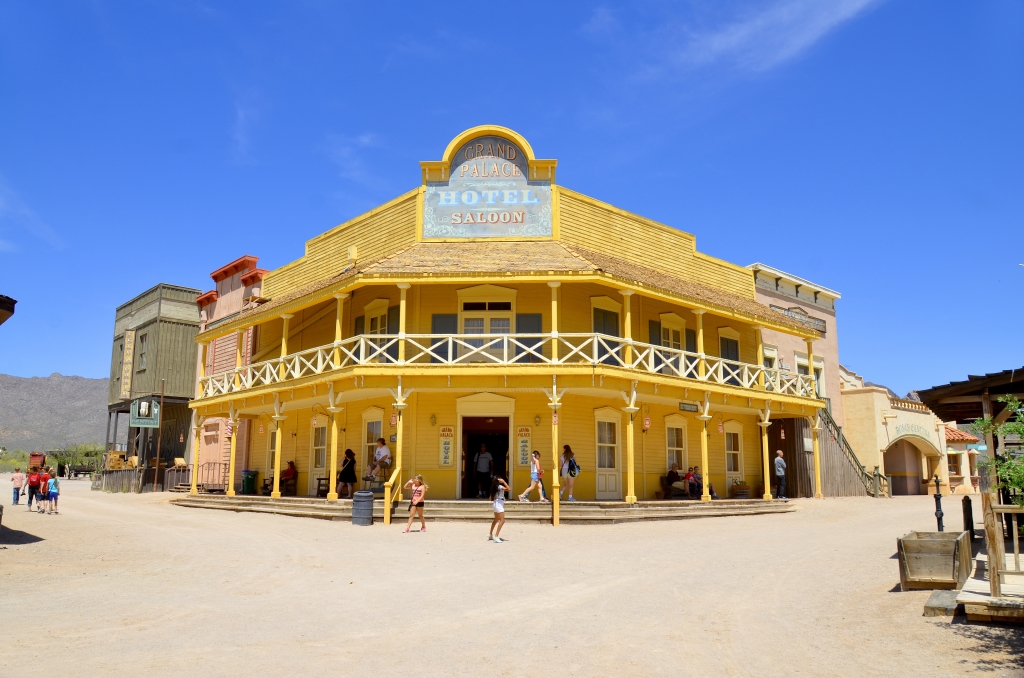


Old Tucson
Previously known as Old Tucson Studios, this 300-acre film set and theme park located just outside Tucson was built in 1939 and has hosted more than 500 classic Western movies and TV shows featuring some of the genre’s biggest stars, including Paul Newman, William Holden, Clint Eastwood and Ronald Reagan.
John Wayne starred in four movies here: “Rio Bravo,” “El Dorado,” “Rio Lobo” and “McLintock!” Other classic films shot here include 1957’s “3:10 to Yuma”; the 1976 version of “A Star is Born,” starring Kris Kristofferson and Barbra Streisand; Eastwood’s 1976 Western “The Outlaw Josey Wales”; “The Cannonball Run,” the 1981 hit comedy starring Burt Reynolds; 1984’s “Revenge of the Nerds”; and 1993’s American Western “Tombstone,” starring Kurt Russell, Val Kilmer and Sam Elliott.
TV series filmed here include “Rawhide,” “Bonanza,” “Little House on the Prairie” and “Webster.” Today, the studio welcomes guests for tours, immersive Western entertainment, rides, musical shows and seasonal activities.
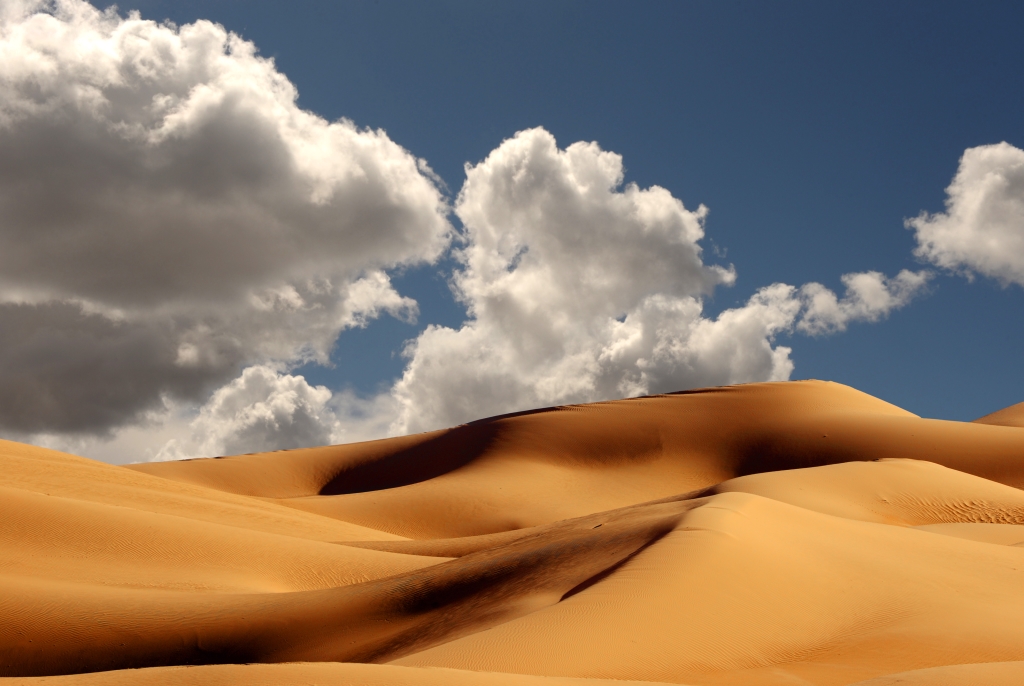


Imperial Sand Dunes
Most “Star Wars” fans know that scenes of Luke Skywalker’s original Tatooine home were filmed in Tunisia. But did you know that Arizona also stood in for the desert planet? A key scene from the series’ third installment, “Return of the Jedi,” took place outside of Mesa.
The nation’s largest collection of inland sand dunes stretches more than 40 miles long and 5 miles wide on the Arizona-California-Mexico border, about 20 miles west of Yuma. One segment, Buttercup Valley, served as the setting for the battle on Jabba the Hutt’s sail barge, where Luke almost plunged to his death in the Sarlacc pit.
Scenes from “The Scorpion King, “Jumanji: The Next Level” and the Oscar-winning 1962 epic “Lawrence of Arabia” were also filmed at the dunes. While you won’t see any sandcrawlers here, you will see ATVs and other off-road vehicles. Permits are required, although rangers usually allow quick stops for a look or photo.
blm.gov/visit/imperial-sand-dunes
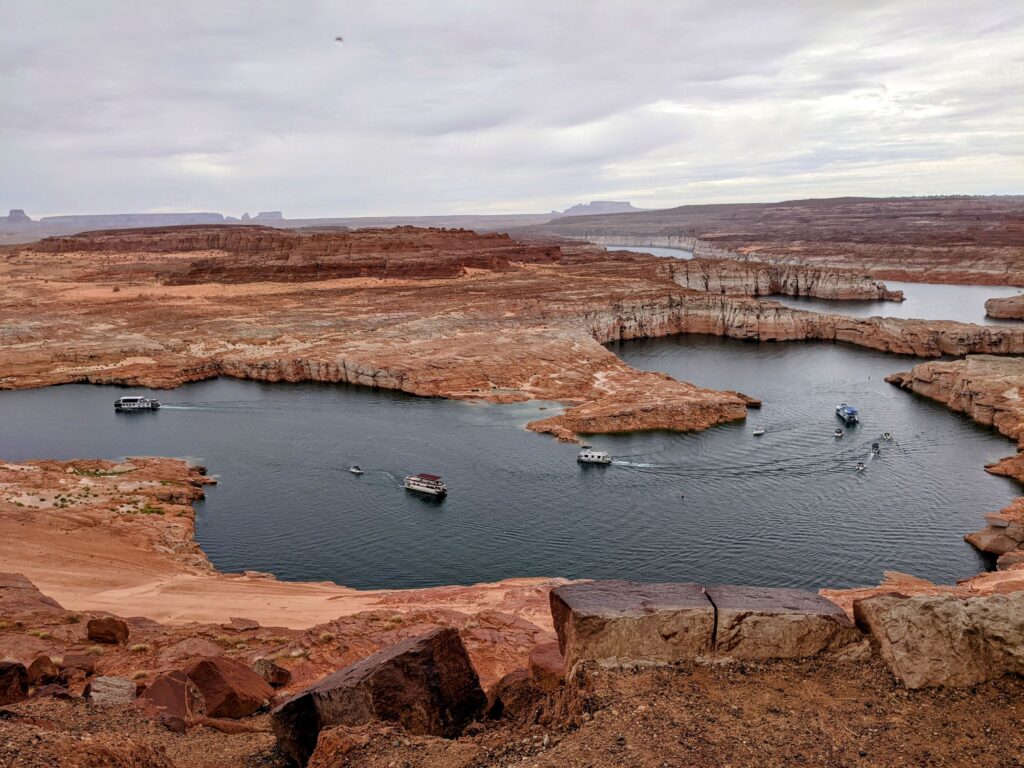


Page, Glen Canyon and Lake Powell
The 1968 sci-fi success “Planet of the Apes” took place on an arid, unnamed planet 2,000 years in the future. The desert area in northern Arizona fit the script to a T: “cratered desert of reddish hue” and “a vast lake surrounded by soaring sandstone pinnacles.” Scenes from the 2001 remake were also filmed at Lake Powell.
In addition, the space-age landscape has served as the backdrop for the 1987 action drama “Thunder 2,” the 1994 Mel Gibson-Jodie Foster Western romp “Maverick,” the 2012 action-adventure “John Carter,” the 2013 space thriller “Gravity” and the 2021 horror drama “Miracle Valley,” which was also shot in Tumacacori National Park, Patagonia and Bisbee.
Today, the area retains its otherworldly appeal and is a top destination for tourists, photographers and nature lovers.
visitpageaz.com // lakepowell.com
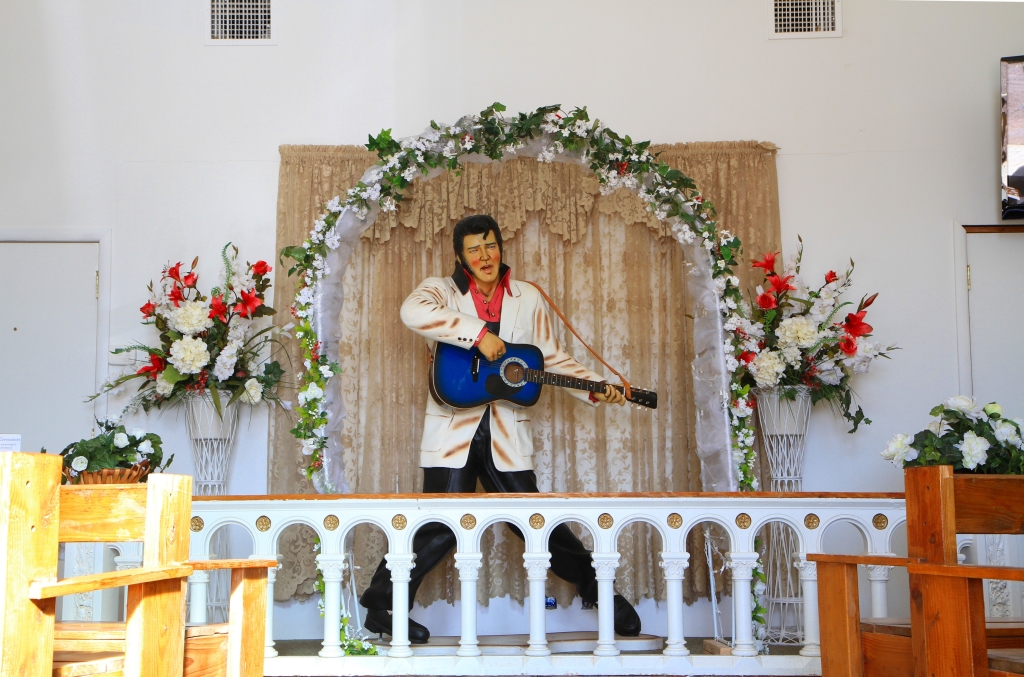


Lost Dutchman State Park
Modern-day lore of the Superstition Mountain range, about 30 minutes east of Phoenix, includes the legend of the hidden Lost Dutchman’s Gold Mine. The 1949 adventure film “Lust for Gold” tells the story of Jacob Waltz, the Dutchman who is said to have buried his treasure in the hills, while the 2013 lost-footage horror flick “Dark Mountain” uses an ill-fated search for Waltz’s buried treasure as its plot.
But the most popular movie to film in the shadows of the mountains was the 1996 Tom Cruise-Cuba Gooding vehicle “Jerry Maguire.” The Camel Chevrolet commercial shoot, in which Gooding’s character Rod Tidwell refuses to ride a camel, was shot against the backdrop of Flat Iron Peak. Tidwell also scores a game-winning touchdown at Arizona State University’s Sun Devil Stadium.
The park offers miles of hiking trails, ranging from short beginner-friendly loops to a challenging 16.9-mile trail that takes you up more than 5,000 feet in elevation. Make sure to stop at the Superstition Mountain Lost Dutchman Museum, which contains memorabilia and props from the Apacheland Movie Ranch, a local film studio that was destroyed by fire. A centerpiece of the museum is the Elvis Chapel, which was built for Elvis Presley’s 1969 Western “Charro.”
azstateparks.com/lost-dutchman // superstitionmountainlostdutchmanmuseum.org

